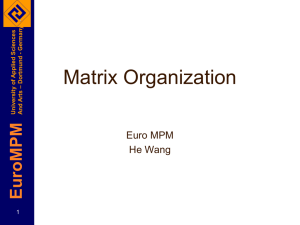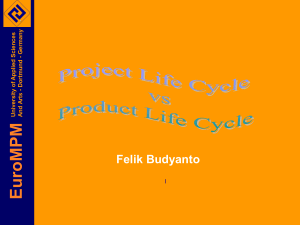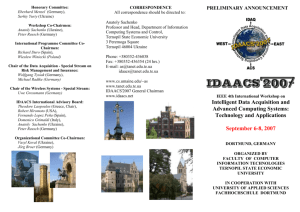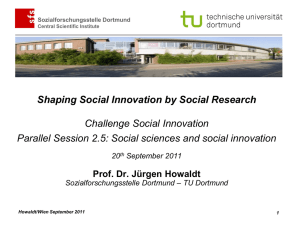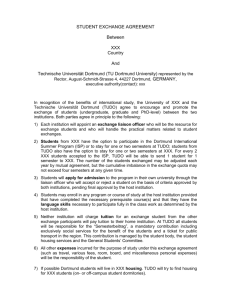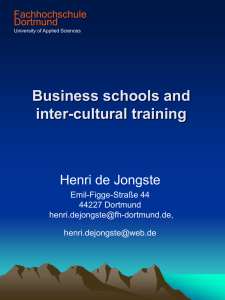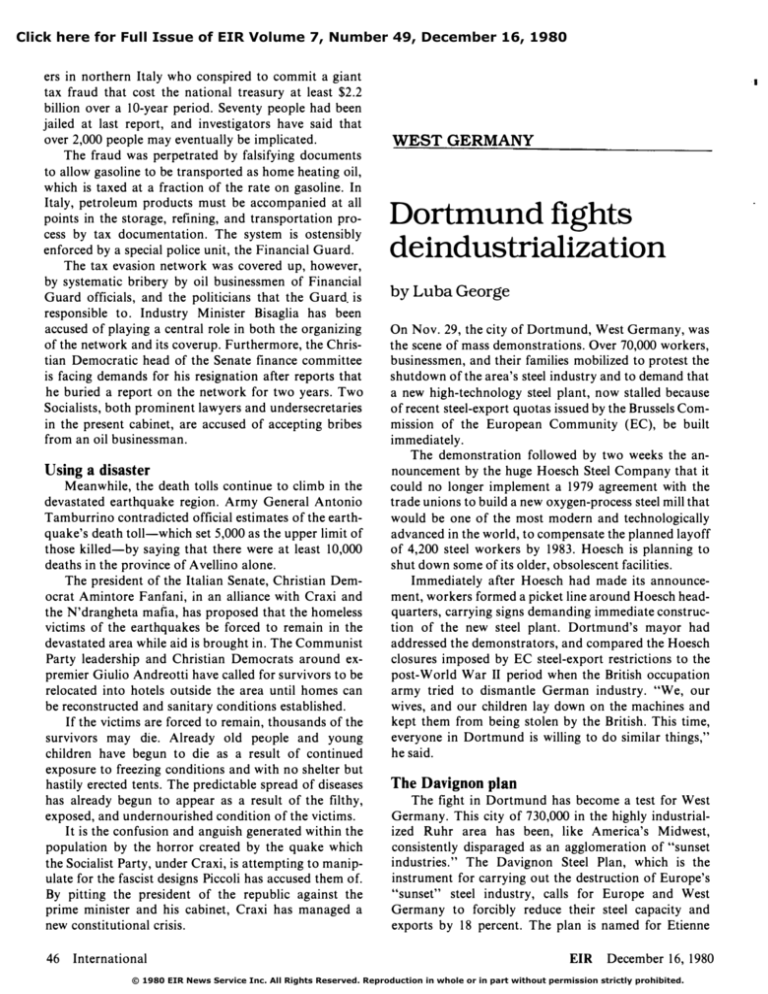
Click here for Full Issue of EIR Volume 7, Number 49, December 16, 1980
ers in northern Italy who conspired to commit a giant
tax fraud that cost the national treasury at least $2.2
billion over a lO-year period. Seventy people had been
jailed at last report, and investigators have said that
over 2,000 people may eventually be implicated.
WEST GERMANY
The fraud was perpetrated by falsifying documents
to allow gasoline to be transported as home heating oil,
which is taxed at a fraction of the rate on gasoline. In
Italy, petroleum products must be accompanied at all
points in the storage, refining, and transportation pro­
cess by tax documentation. The system is ostensibly
enforced by a special police unit, the Financial Guard.
The tax evasion network was covered up, however,
by systematic bribery by oil businessmen of Financial
Guard officials, and the politicians that the Guard is
Dortmund fights
de industrialization
by Luba George
responsible to. Industry Minister Bisaglia has been
accused of playing a central role in both the organizing
On Nov. 29, the city of Dortmund, West Germany, was
of the network and its coverup. Furthermore, the Chris­
the scene of mass demonstrations. Over 70,000 workers,
tian Democratic head of the Senate finance committee
businessmen, and their families mobilized to protest the
is facing demands for his resignation after reports that
shutdown of the area's steel industry and to demand that
he buried a report on the network for two years. Two
a new high-technology steel plant, now stalled because
Socialists, both prominent lawyers and undersecretaries
of recent steel-export quotas issued by the Brussels Com­
in the present cabinet, are accused of accepting bribes
mission of the European Community (EC), be built
from an oil businessman.
immediately.
U sing a disaster
nouncement by the huge Hoesch Steel Company that it
The demonstration followed by two weeks the an­
Meanwhile, the death tolls continue to climb in the
could no longer implement a 1979 agreement with the
devastated earthquake region. Army General Antonio
trade unions to build a new oxygen-process steel mill that
Tamburrino contradicted official estimates of the earth­
would be one of the most modern and technologically
quake's death toll-which set 5,000 as the upper limit of
advanced in the world, to compensate the planned layoff
those killed-by saying that there were at least 10,000
of 4,200 steel workers by 1983. Hoesch is planning to
deaths in the province of Avellino alone.
shut down some of its older, obsolescent facilities.
The president of the Italian Senate, Christian Dem­
Immediately after Hoesch had made its announce­
ocrat Amintore Fanfani, in an alliance with Craxi and
ment, workers formed a picket line around Hoesch head­
the N'drangheta mafia, has proposed that the homeless
quarters, carrying signs demanding immediate construc­
victims of the earthquakes be forced to remain in the
tion of the new steel plant. Dortmund's mayor had
devastated area while aid is brought in. The Communist
addressed the demonstrators, and compared the Hoesch
Party leadership and Christian Democrats around ex­
closures imposed by EC steel-export restrictions to the
premier Giulio Andreotti have called for survivors to be
post-WorId War II period when the British occupation
relocated into hotels outside the area until homes can
army tried to dismantle German industry. "We, our
be reconstructed and sanitary conditions established.
If the victims are forced to remain, thousands of the
wives, and our children lay down on the machines and
kept them from being stolen by the British. This time,
survivors may die. Already old people and young
everyone in Dortmund is willing to do similar things,"
children have begun to die as a result of continued
he said.
exposure to freezing conditions and with no shelter but
hastily erected tents. The predictable spread of diseases
has already begun to appear as a result of the filthy,
exposed, and undernourished condition of the victims.
It is the confusion and anguish generated within the
The Davignon plan
The fight in Dortmund has become a test for West
Germany. This city of 730,000 in the highly industrial­
ized
Ruhr area has been, like America's Midwest,
population by the horror created by the quake which
consistently disparaged as an agglomeration of "sunset
the Socialist Party, under Craxi, is attempting to manip­
industries." The Davignon Steel Plan, which is the
ulate for the fascist designs Piccoli has accused them of.
instrument for carrying out the destruction of Europe's
By pitting the president of the republic against the
"sunset" steel industry, calls for Europe and West
prime minister and his cabinet, Craxi has managed a
Germany to forcibly reduce their steel capacity and
new constitutional crisis.
exports by 18 percent. The plan is named for Etienne
46
International
EIR
December 16, 1980
© 1980 EIR News Service Inc. All Rights Reserved. Reproduction in whole or in part without permission strictly prohibited.
I
Count Davignon, head of the EC's Industrial Commis­
The fight currently taking place in Dortmund is not
merely a fight for Dortmund's survival as an industrial
sion.
Under the Davignon plan, West Germany would
center of West Germany; it is a fight against the zero­
have to forcibly reduce its present 44-million-ton pro­
growth and post-industrial Malthusians such as the
duction output to 36 million tons, a level barely 50
Club of Rome and the German Marshall Fund, which
have targeted Dortmund as a model for deindustriali­
percent of that reached in 1974.
The plan is being carried out over the opposition of
zation for West Germany as a whole.
steel companies, trade unions and industrialists, with
The actual shutdown of Dortmund's industry began
the same arguments as those used to scrap steel and
1 1 years ago with a wave of steel plant and coal mine
auto production in the United States. And it is the
closures resulting in over 39,000 layoffs and a perma­
technologically modern German steel industry that is
nent reduction of the skilled work force.
being hit the hardest.
Figuring largely in this planned shrinkage of Dort­
mund is Social Democatic Party (SPD) chairman Willy
The modernization question
Brandt, also chairman of the World Bank's Brandt
The city of Dortmund is not simply fighting to stop
Commission, and long an advocate of "appropriate
the destruction of the steel industry, but is fighting for
technologies," i.e., labor intensivity, for the developing
modernization as well. On Nov. 14, the Dortmund City
sector.
Council passed a resolution demanding not only the
Brandt had initiated several studies calling for the
construction of the oxygen-process steel mill, but basic
replacement of most of Dortmund's heavy industry with
improvements in industrial infrastructure to support the
"more manageable" handicraft industries to provide a
continued economic development of the region, includ­
dependable, labor-intensive, employment base for Dort­
ing construction of a nuclear power plant and expansion
mund's "overly skilled" population. The objective, ac­
of regional waterways and canals, and the construction
cording to the Brandt-commissioned studies, was "to
of new streets and highways.
literally remake the economic base" of Dortmund.
Regional press coverage of the Dortmund events
A May 1980 report by the German Marshall Fund
stressed the fact that this highly unusual mobilization
calls for Dortmund to become a model of "planned
was clearly favoring high-technology solutions and
economic transition"-a euphemism for Brandt's de­
nuclear energy. The Westdeutsche Allgemeine Zeitung
industrialization-which it says "is succeeding." The
played up this nuclear angle in its coverage of Dort­
German Marshall Fund report says:
mund's mayor, Herr Samtlebe, in his address to the
demonstrators during the Nov. 29 demonstration. Un­
der a banner headline "Nuclear Energy must Save
Dortmund," the Zeitung quoted Samtlebe on the impor­
tance of nuclear energy for "improving the competitive­
ness of the eastern region of the Ruhr" as a whole.
The move to broaden the fight to include nuclear
energy development was extended even further by the
European Labor Party (Europaische Arbeiterpartei­
EAP), which played a pivotal role in the Dortmund
demonstration, of which it was a cosponsor. The EAP
had challenged the demonstrators to take up a fight for
full implementation of the European Monetary System
(EMS) as the most efficient means of ensuring that the
demands in the Dortmund resolution would be met.
During this time, Dortmund lost population and
the exodus was not discouraged-in fact, it was
viewed as an asset. . . . It's a good thing when
fewer
workers
drink
more
beer
than
ever
before. . . . Dortmund also turned its high unem­
ployment rate into an economic asset. It adver­
tised its large available and trainable labor supply
as a source of immediate and future employer
satisfaction. . . . Special programs were set up for
the female labor force-a tactic that contributed
to Dortmund's ability to attract and maintain
small/medium-size firms. . . . The program en­
courages the small [less efficient] low energy­
based industries.
In an open letter to the city leaders welcoming the
The German Marshall Fund's proposals are sup­
passage of the City Council's resolution, the EAP urged
ported by the Academy for Contemporary Problems
West Germans to push ahead with the consolidation of
based in Columbus, Ohio; the University of Reading,
Phase Two of the
England; and the Deutsches Institut fUr Urbanistik in
EMS-the
European
Monetary
Fund-so that the necessary long-term, low-interest
West Berlin, Germany. The Institute fUr Urbanistik has
credits and financing will be available for industrial
been the coordinator for these "managed growth" and
expansion and exports. The open letter asked to amend
"planned economic transition" programs in West Ger­
the resolution to include a demand for withdrawal of
many. The University of Reading is connected to the
steel-production quotas imposed by the EC Commission
Tavistock Institute in Sussex, England, and has been
and a demand that Phase Two of the European Mone­
central in formulating global de-urbanization and de­
tary System be immediately implemented.
industrialization plans.
EIR
December 16, 1980
International
47

